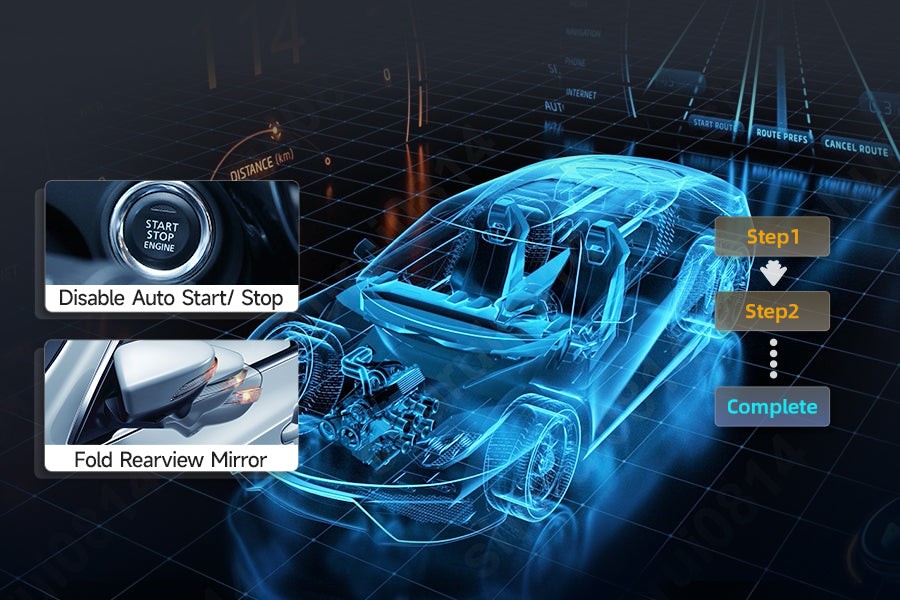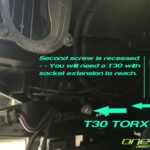Resetting your car’s check engine light without an OBD2 scanner might seem daunting, but it’s often possible using a few simple methods. This guide will walk you through various techniques to reset OBD2 codes without a reader, helping you clear those pesky error messages and potentially save a trip to the mechanic.
Why You Might Need to Reset OBD2 Codes
Before diving into the how-to, let’s understand why resetting OBD2 codes might be necessary:
- Addressing Fixed Issues: After repairing a car problem, resetting the codes clears the error message, confirming the issue is resolved.
- Passing Emissions Tests: A lingering check engine light, even for a fixed issue, can cause an emissions test failure. Resetting the codes allows for a clean test.
- Temporary Fix: While not a permanent solution, resetting codes can temporarily disable the check engine light, providing time for proper diagnosis and repair.
Methods for Resetting OBD2 Codes Without a Scanner
1. Disconnecting the Battery
This is the most common method. Here’s a step-by-step guide:
- Safety First: Ensure the ignition is off to prevent electrical surges.
- Locate the Battery: Open the hood and identify the battery, usually in the engine bay.
- Disconnect Negative Terminal: Using a wrench, carefully disconnect the negative terminal (black cable) marked with a “-“.
- Wait: Allow the car’s computer to reset by waiting 15-20 minutes. Some suggest pressing the brake pedal to discharge residual power.
- Reconnect: Reattach the negative terminal securely.
- Confirmation: Start the car and check if the check engine light is off.
2. Removing the ECU Fuse
This method targets the Engine Control Unit (ECU) directly:
- Preparation: Turn off the ignition.
- Find Fuse Box: Consult your car’s manual to locate the fuse box (often under the dashboard or in the engine compartment).
- Identify ECU Fuse: Your car’s manual will specify the ECU fuse.
- Fuse Removal: Carefully remove the ECU fuse using a fuse puller or pliers.
- Wait Period: Wait 15-20 minutes for the system to reset.
- Reinsert Fuse: Replace the fuse securely.
- Verification: Start the car and verify the check engine light is off.
3. Performing a Drive Cycle
Sometimes, specific driving patterns can trigger a system reset:
- Cold Start: Begin with a cold engine (after sitting for at least 8 hours).
- Initial Idle: Let the engine idle for 2 minutes.
- Steady Driving: Drive at a consistent speed (around 55 mph) for 15 minutes.
- Stop-and-Go Driving: Simulate city driving with 15 minutes of stop-and-go traffic.
- Final Idle: Idle for another 2 minutes before turning off the engine.
- Check Light: Monitor the check engine light after the cycle.
4. Utilizing a Third-Party App with a Bluetooth Adapter
While technically requiring a device, a Bluetooth OBD2 adapter and a smartphone app offer a budget-friendly alternative to a dedicated scanner:
- Adapter Connection: Plug the Bluetooth adapter into the OBD2 port (usually under the dashboard).
- App Setup: Download a compatible app (e.g., Torque for Android or OBD Fusion for iOS).
- Bluetooth Pairing: Connect the adapter to your smartphone via Bluetooth.
- Code Reset: Follow the app’s instructions to read and reset the codes.
Conclusion
These methods can help reset OBD2 codes without a reader. However, remember that a check engine light indicates a potential problem. While resetting the light might provide a temporary fix or clear a resolved issue, addressing the underlying cause is crucial for long-term vehicle health. Always consult your car’s manual and exercise caution when working with your car’s electrical system. If the check engine light persists, professional diagnosis is recommended.


